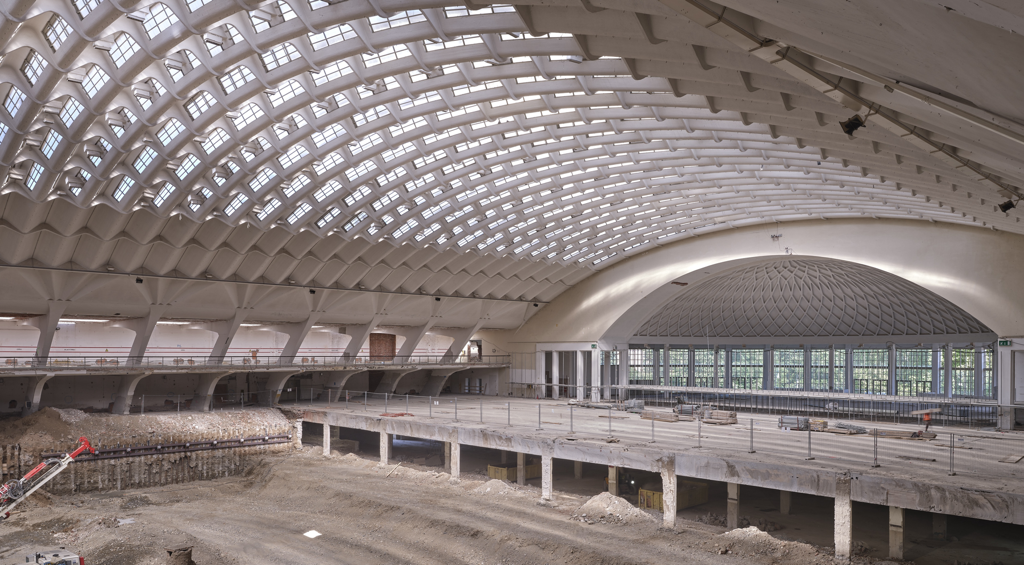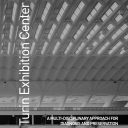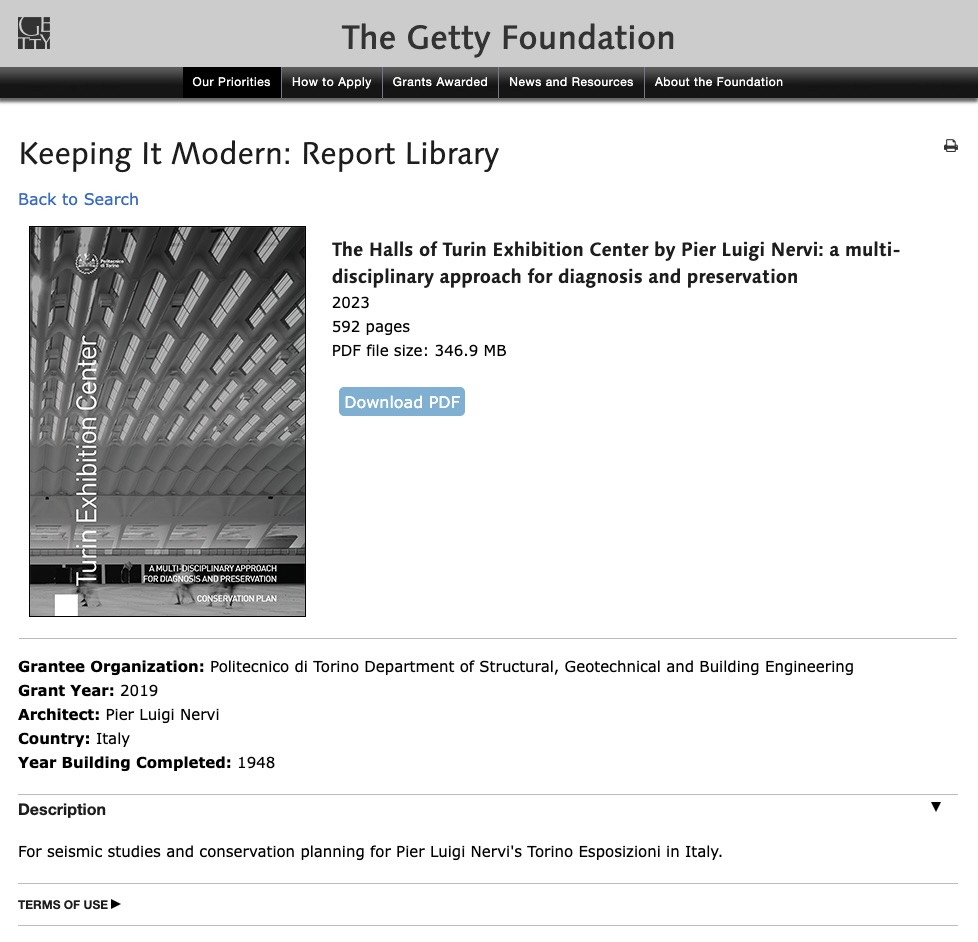
The Conservation Management Plan for Torino Esposizioni, conducted by a multidisciplinary team led by Professor Rosario Ceravolo from the Department of Structural, Building and Geotechnical Engineering and the R3C center of the Politecnico di Torino, was published by the Getty Foundation in Los Angeles and is now available online on the Keeping it Modern (KIM) initiative’s website, which funded the research and creation of the document.
The Getty Foundation awarded the Politecnico di Torino the KIM grant in 2019 to support the development of a Conservation Management Plan for Torino Esposizioni, an architectural complex designed by Pier Luigi Nervi between 1947 and 1953.
The project was coordinated by the Department of Structural, Building and Geotechnical Engineering of the Politecnico di Torino, with the supervision of the Pier Luigi Nervi Project Foundation and in collaboration with the Department of Architecture and Design of the Politecnico di Torino, the Università Iuav di Venezia, Roma Tor Vergata, and the College of Engineering of the University of Miami, as well as companies like Buzzi Unicem, Ecobeton Italy, Leonardo, and Cmr-Lab. It produced a Conservation Plan that outlines the fundamental guidelines for the preservation and maintenance of this iconic architectural heritage. This comprehensive plan is the result of extensive research, experimental investigations, and innovative technological applications.
“The complex relationship between form, structure, and function that characterizes Nervi’s architecture is crucial when intervening on this architecture. Conservation and safety must coexist in a non-conflicting way, without one prevailing over the other, fully respecting the original structure. Safety and conservation issues must go hand in hand, and this is precisely the approach followed in preparing the Plan for Torino Esposizioni,” explains Professor Ceravolo.
The Conservation Management Plan has already played a crucial role in the ongoing renovation and reuse project of Torino Esposizioni, which includes the creation of a new civic library and the expansion of university spaces. The project, funded by the National Plan for Recovery and Resilience (PNRR), exemplifies the successful integration of conservation principles with adaptive reuse.
Thanks to the joint work of the Politecnico di Torino and the Pier Luigi Nervi Project Foundation, it has been possible to gather and make available to the Municipality of Turin, the owner of the structure, the Superintendency, the designers led by ICIS, and SCR, the contracting authority, an essential body of knowledge for planning the recovery of a modern architectural icon in Turin.
The Plan consists of detailed reports, 3D models, orthophotos, and graphic schemes that summarize the extensive work conducted during the study phase. It addresses the delicate balance between conservation and safety, particularly in the context of seismic activity, and highlights the unique structural elements of Nervi’s design.
The publication of the Plan marks a significant milestone in the preservation of modern architectural heritage. It not only provides a model for the ongoing rehabilitation of Torino Esposizioni but also sets a precedent for future conservation efforts of 20th-century structures worldwide.
“The Conservation Management Plan for Torino Esposizioni represents a fundamental step in the conservation and enhancement of my grandfather Pier Luigi Nervi’s architectural legacy. This was made possible thanks to the fruitful collaboration with SCR Piemonte, which allowed the integration of the Conservation Plan’s expertise and resources into the feasibility projects and then into the definitive and executive ones, to best preserve a masterpiece of Italian modernism. The path followed for Torino Esposizioni should serve as an example for the entire heritage of my grandfather’s works still awaiting sustainable and contemporary reuse, particularly the Palazzo del Lavoro in Turin,” says Marco Nervi, President of the Pier Luigi Nervi Project Foundation.


